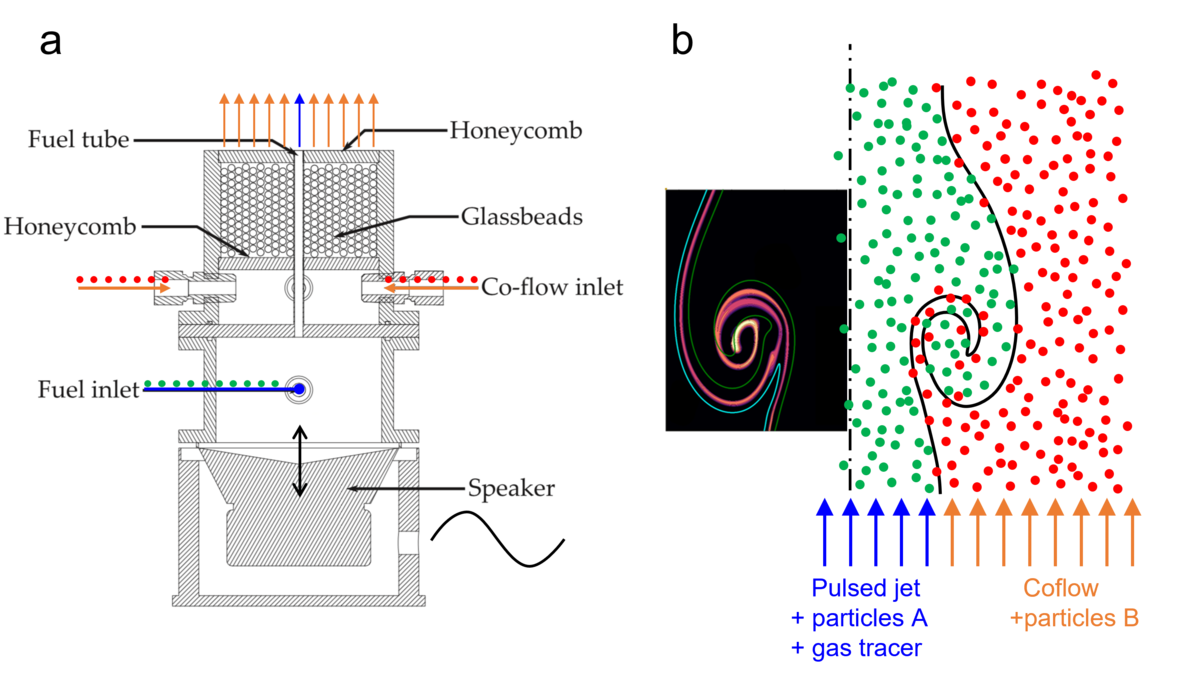Heteroaggregate Formation Dynamics in the Dispersed Phase – Modeling, Simulation, and Experiments

Project Leader:
Prof. Dr. Sebastian Kaiser
University of Duisburg-Essen
Dr.-Ing. Irenäus Wlokas
University of Duisburg-Essen
Heteroaggregates are composite particles formed by two or more phases. A possible process route is mixing of aerosols, either “cold” from prepared powders, or directly from gas-phase synthesis, or both in the same process. However, for nanoparticles the observability of heteroaggregate formation is limited due to their small size, and they exhibit transport properties that are challenging for a simulation.
This project investigates the mixing of aerosol streams and the ensuing nanoparticle heteroaggregation in flow experiments via in situ laser diagnostics and in numerical simulations of transport and particle dynamics. In order to shed light on the physics of the process we develop (i) spatially resolved in situ diagnostics for quantifying mixing “quality” and for tracking heteroaggregate formation and (ii) models for transport, mixing, and particle dynamics. The methods and models need to cover a very wide range of scales: Convective transport, turbulent mixing, and diffusion (in process engineering loosely termed macro-, meso-, and micro-mixing).
The experiments provide validation targets for model development and simulation, while in a complementary way the simulations exploit scales and quantities inaccessible in the experiments.The principal flow configuration is an axisymmetric jet in a coflow. Each of these two streams carries a different particle species. In the first phase of the project (proposed here), the jet is laminar with a repeatable vortex ring created by periodic perturbations in the jet exit velocity (in the experiment, with a loudspeaker in flow path to the jet).
The mixing of both the two gas streams and the two particle streams in the spatiotemporally evolving vortex and the associated particle heteroaggregation is investigated. Experimentally, in quantitative laser-sheet imaging the mixture fraction is measured via fluorescence of a gaseous “tracer” added to the jet. The particles are from photoactive inorganic materials (“phosphors”) so that their number densities can be imaged species-selective via photoluminescence.
Heteroaggregation is investigated with a novel technique based on heat transfer from small laser-heated soot particles “heteroaggregated” onto the larger phosphor particles. The simulations are based on the finite volume method for the solution of the conservation equations for the gas and the dispersed phase. The flow simulation is coupled with a population balance equation (PBE). The project investigates several approaches for solving the PBE: The method of moments, the sectional method, and stochastic methods, and evaluates them in term of accuracy and computational efficiency. New approaches are developed to deal with the scale discrepancy in particle diffusion that strongly interacts with the particle dynamics.

